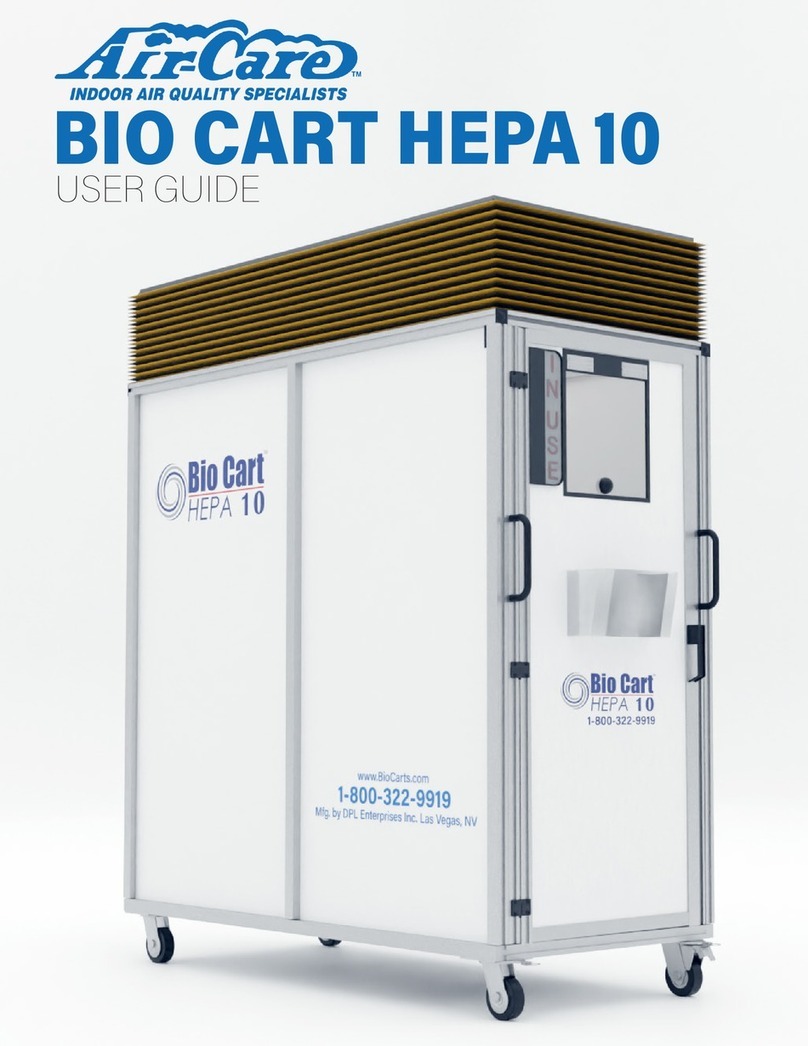
PAGE 9
4) Place the drill in the Air-Care
drill holder and secure with the
included straps. Use the 20’ drill
powered dryer duct cable with
4” dryer duct brush. Insert the
drive end of the cable into the
chuck of your electric drill. A
low speed (300-500RPM), 3/8”
chuck is best suited.
5) Plug the drill into the foot
pedal switch (A) and plug the
pedal cord into the wall (B).
Press the Drill’s Trigger and lock
it in the “ON” position. It will
only run when the foot pedal is
pressed. The pedal leaves both
hands free.
NOTE: Avoid sharp bends in the
cable, it will eventually result in
a broken core.
6) Turn on the vacuum motors
in the Air-Care DuctMaster
then insert the 4” brush into the
dryer vent. The drill will not run
unless BOTH the trigger switch
in the drill handle and the foot
pedal are turned ON, Start the
drill using the foot pedal only
AFTER the brush has been
inserted into the duct.
7) If you experience resistance to the brush, the cable may “Twist Up” on you. If so, STOP the drill. Try
reversing the rotation and go slowly until you get past the restriction. If the Drill has a torque limiting
setting on the chuck, it can be set to a lower torque to reduce cable twist up.
8) A slow steady insertion is ideal, but you may need to pull the cable out a few inches and push it
rapidly back to get around some obstructions and elbows.
9) If the cable cannot be pushed all the way to the end of the duct, it may be necessary to also insert
the cable and brush from the other end of the duct.
10) If there is visible lint clog or bird nest, the nest claw tool may be needed to break it up. Attach the
nest claw tool to the cable with a setscrew, which is the same way the 4” dryer duct brush attaches.
CAUTION: The nest claw can be very aggressive and may damage flexible ducts.
11) If you only have access to one end of the exhaust duct, use the “Y” adapter to allow the vacuum and
the cable to be inserted from the same end of the exhaust duct.
12) Once the duct has been cleaned, the dryer should also be cleaned.
13) Remove the back cover of the dryer and clean out the lint on the internal components. Usually 4-8
screws are used to mount the back cover. Access to the interior of the dryer will vary with model, be
careful to not damage it.
DRYER DUCT CLEANING WITH THE VENT VAC
[CONTINUED]
A
B






























